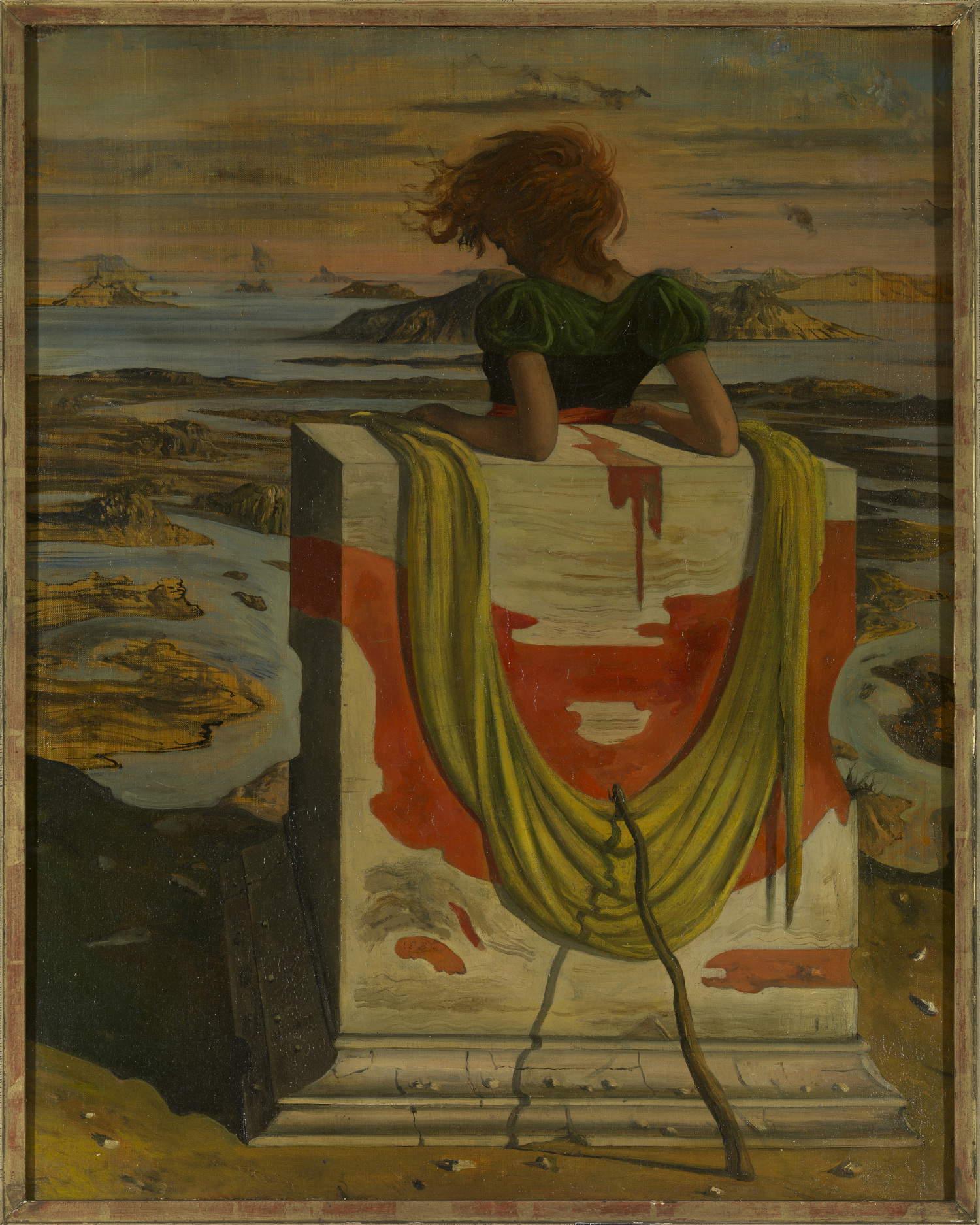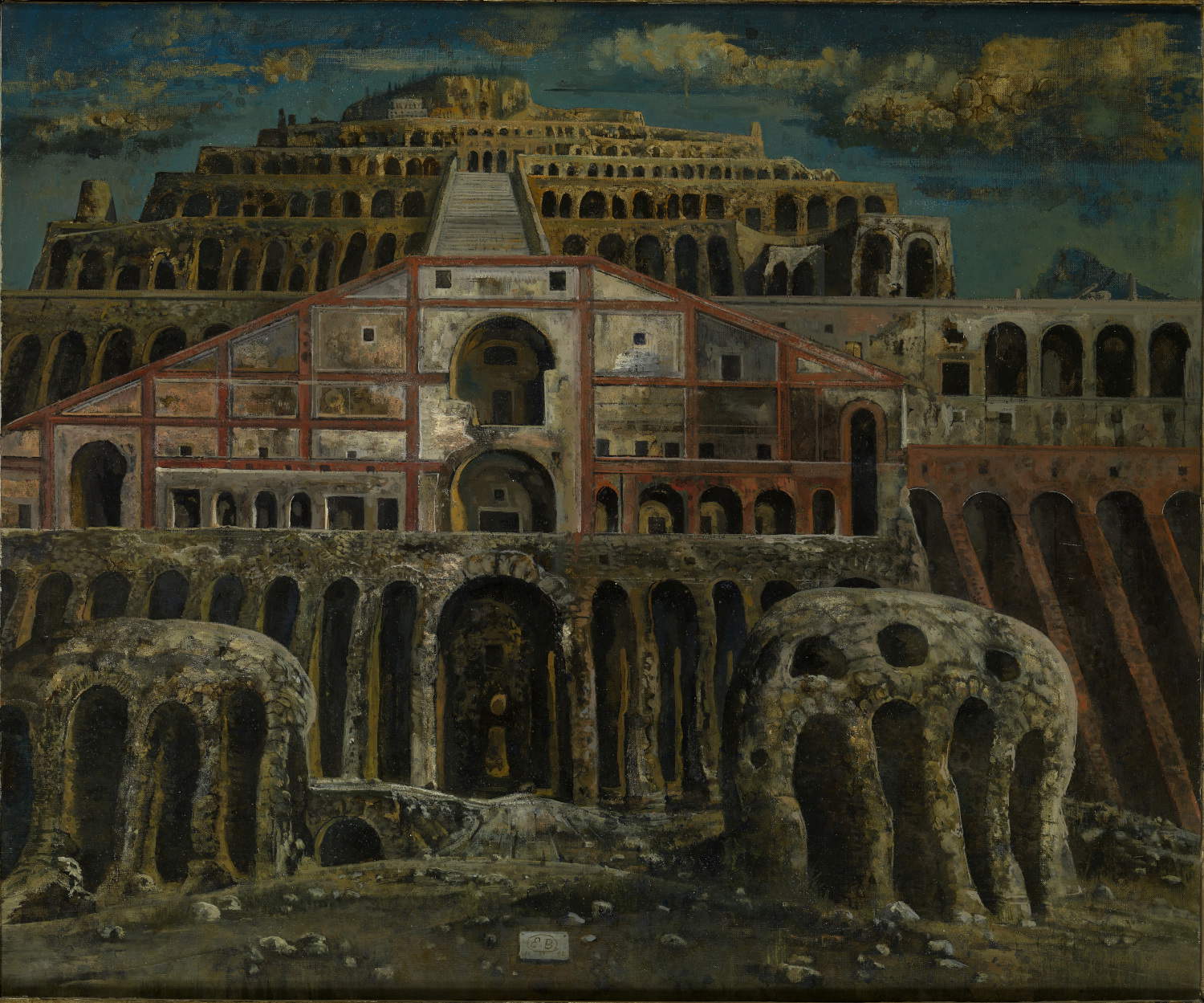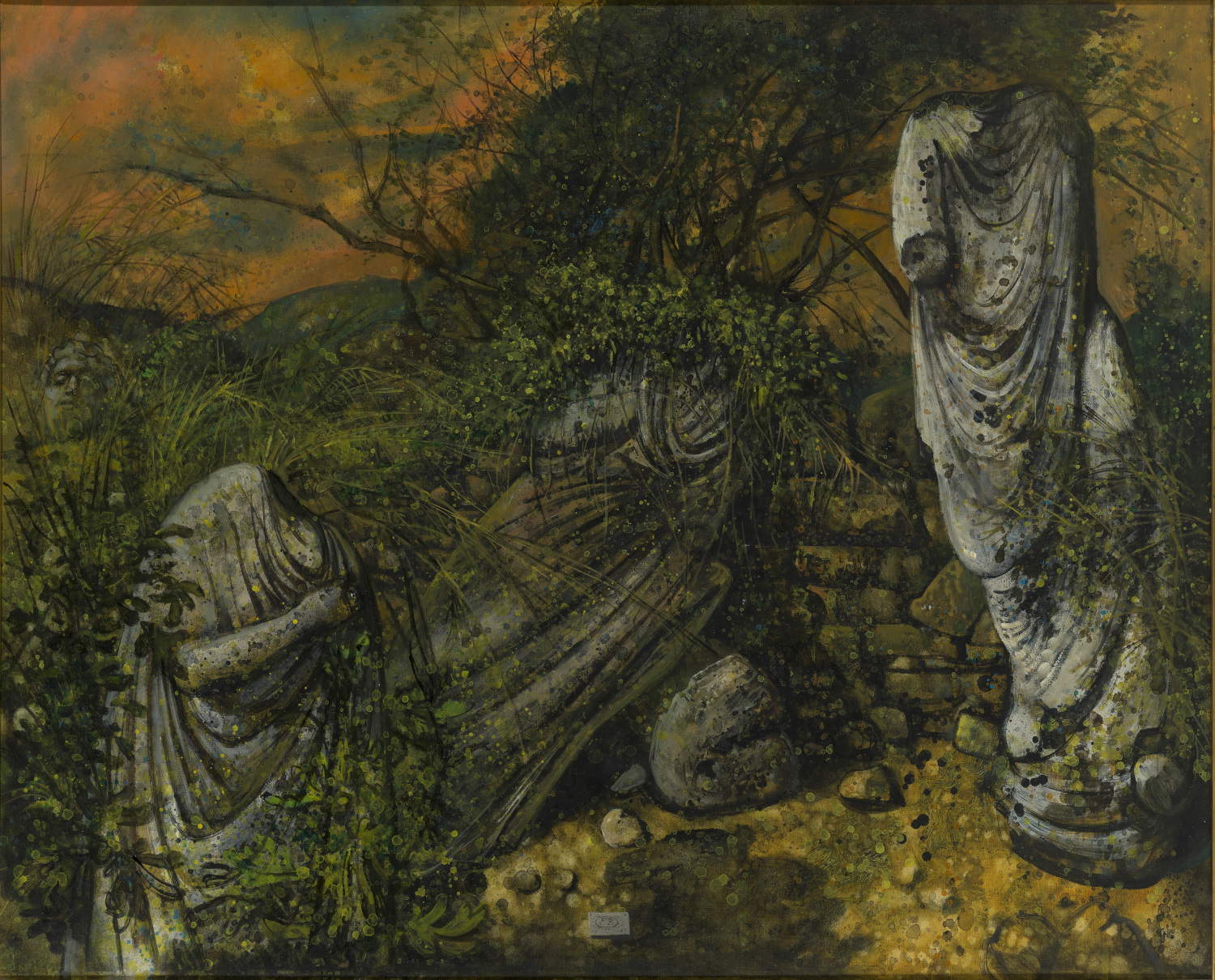The Mart in Rovereto dedicates to Eugene Berman (St. Petersburg, 1899 - Rome, 1972) the largest and most important exhibition ever held on his life and work, helping to bring international attention back to one of the leading figures of the 20th century neo-romantic movement, a cosmopolitan figure and multifaceted intellectual. An eclectic artist, Berman was a painter, illustrator, set designer, collector and travel photographer. Born in Russia in 1899, he lived between Europe and the United States before settling permanently in Rome in the 1950s, where he remained until his death in 1972.
The exhibition project Eugene Berman. Modern Classic, which can be visited from September 27, 2025 to March 1 March 2026 and curated by Sara De Angelis, Denis Isaia, Peter Benson Miller, and Ilaria Schiaffini, supported by the invaluable work of critics, scholars, and historians who, together with the curators themselves, formed a study committee (Gloria Galante, Lindsay Harris, Romina Laurito, Lorenzo Mantovani, Gabriele Quaranta, Eros Renzetti, Martina Rossi, Ilaria Schiaffini, Giulia Tulino), from an idea of Vittorio Sgarbi and Elisabetta Scungio, is situated within thewithin the most recent international research that has brought to light lesser-known but fundamental experiences of the 20th century. The Mart, too, has in recent years dedicated exhibitions to crucial but little-known figures, such as Fabrizio Clerici and Leonor Fini (2023), Leonardo Cremonini (2021), Pyke Koch (2025), Piero Guccione (2021), and Felice Tosalli (2024), in addition to the focus on Italian Surrealisms (2024).
The retrospective on Eugene Berman stems from study work on the precious bequest that the artist himself donated to the Italian state, which is kept at the National Archaeological Museum of Agro Falisco in Civita Castellana (Viterbo). The researchers learned about some private collections that preserve important nuclei of paintings made by the artist and were able to study some of the documentation kept by theAmerican Academy in Rome.
The Rovereto project was preceded by the monograph Imaginary Walks. The Revealed Collection and Rediscovered Work of Eugene Berman (1899-1972) held at the National Archaeological Museum of Agro Falisco and Forte Sangallo in Civita Castellana (Jan. 10-Sept. 6).
Thanks to collaboration with some of the most important international collectors, the exhibition features more than 100 paintings and an equally rich body of papers, along with archaeological finds and antiquities, documents, notebooks and archival photographs. The chronologically oriented exhibition traverses the three main phases of Berman’s career: Paris in the 1920s and 1930s, the United States between 1935 and 1957, and finally Rome, from 1958 to 1972).
Two thematic sections are devoted to the Neo-Romantics, a sentimental and nostalgic variant of French Surrealism (the group’s origin is due to the critic Waldemar George, whose portrait signed by Andrea Savinio is preserved at the Mart), and to Berman’s Roman years, when he came into contact with artists such as Corrado Cagli, Alberto Savinio, Fabrizio Clerici, Leonor Fini, Carlye Bro and Piero Fornasetti.


The exhibition thus aims to restore the complexity of his poetics: from the influences of the Nabis and the Parisian avant-garde, to European and American surrealism, to Italian classicism. Italy was a true passion for him: from the cities of art to memories of the Grand Tour, from the suggestions of Stendhal and Goethe to the lessons of De Chirico, he was able to transform these sources into a dreamlike visual diary in which the experience of the present is mixed with references to artistic and literary tradition.
Alongside painting, the Mart also presents Berman’s intense activity as a set and costume designer for theater, opera and ballet. He collaborated with the Metropolitan Opera in New York, the Broadway Theatre, the Ballets Russes in Monte Carlo, Teatro La Scala in Milan, the Accademia Filarmonica in Rome, and the New York City Centre. Among his greatest successes are Antony Tudor’s Romeo and Juliet (1943) and Mozart’s Don Giovanni directed by Rudolf Bing (1957). Illustrations, graphics, and editorial collaborations for magazines such as Vogue America, Life, and Town&Country enrich his career.

An entire section is also devoted to the extraordinary collection of objects and artifacts that belonged to Berman: objects, antiquities and archaeological finds from international private collections and Italian State funds.
The Fund kept by the Regional Directorate National Museums Lazio at Forte Sangallo in Civita Castellana preserves paintings, drawings, albums and notebooks together with the very rich archaeological and ethnographic collection of Etruscan, Villanovan, Greek, Roman, pre-Columbian, and Egyptian artifacts found in Berman’s Roman apartment, located inside Palazzo Doria Pamphili. Part of this diverse group is a nucleus of works and antiquities collected by Berman himself and generously loaned to the Mart.
From theAmerican Academy in Rome, on the other hand, comes a selection of Berman’s impressive photographic archive that includes mainly travel photographs taken in Mexico, Egypt, Libya as well as in various Italian sites: Rome, the Amalfi Coast, Sicily, Verona, Venice, etc. At the Mart, Berman’s shots dialogue with a valuable selection of photographic materials and albums that constitutes a veritable atlas of memory. It includes images made by established coeval authors (such as Henri Cartier-Bresson, Helen Levitt, Charles Henri Ford, Herbert List, Robert Emmett Bright), snapshots produced by historical firms specializing in art reproduction (Alinari, Brogi, Böhm and others), postcards and newspaper clippings.
The exhibition is accompanied by the richest catalog ever published on Berman. Published by Silvana Editoriale, it includes a four-handed essay by Vittorio Sgarbi and Denis Isaia, texts by curators Sara De Angelis, Peter Benson Miller, and Ilaria Schiaffini; as well as contributions by Ester Garasto, Lindsay Harris, Gabriele Quaranta, Eros Renzetti, Martina Rossi, Luca Scarlini, and Giulia Tulino, the catalog of works and apparatus.
Hours: Tuesday, Wednesday, Thursday and Sunday 10 a.m. to 6 p.m.; Friday and Saturday 10 a.m. to 7:30 p.m. Closed Mondays.


 |
| At Mart in Rovereto, the largest retrospective ever devoted to Eugene Berman, exponent of neo-romanticism |
Warning: the translation into English of the original Italian article was created using automatic tools. We undertake to review all articles, but we do not guarantee the total absence of inaccuracies in the translation due to the program. You can find the original by clicking on the ITA button. If you find any mistake,please contact us.